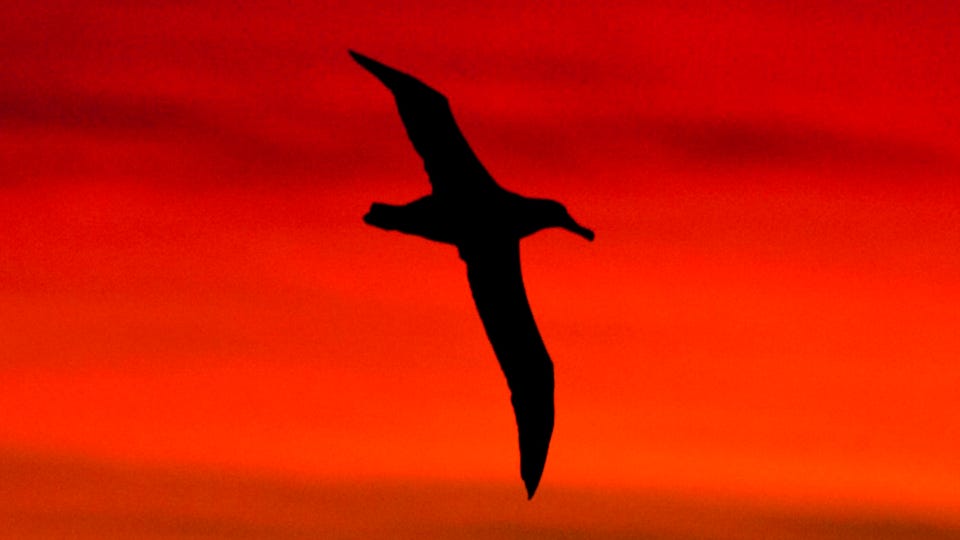Science Should NASA Send An ‘Albatross’ To Mars? How A New Bird-Like Sailplane Could Reveal The Red Planet’s Secrets Jamie Carter Senior Contributor Opinions expressed by Forbes Contributors are their own. I inspire people to go stargazing, watch the Moon, enjoy the night sky New! Follow this author to improve your content experience. Got it! Jul 4, 2022, 08:00pm EDT | Share to Facebook Share to Twitter Share to Linkedin Engineers have designed a motorless sailplane that can soar over the Martian surface for days at a .
. . [+] time like an Albatross, using only wind energy for propulsion.
getty NASA’s little Ingenuity Mars Helicopter drone on Mars has been a complete success. Sent to the red planet strapped to the Perseverance rover in 2020, it’s now flown 27 times on short reconnaissance missions. Ingenuity reaches parts no rover can—especially in rocky terrain—but it has its limitations.
Its tiny size means a tiny battery, which means it can fly for only three minutes at a time and reaches just 39 feet/12 meters. So engineers have come up with something even better for future trips to Mars that can get much higher for longer—an albatross-style glider. Mars is covered from above by many orbiters and on the ground by several rovers, but aside from Ingenuity’s test flights there are no eyes on that layer in between.
It means that planetary scientists lack data on the Martian climate as well as geological features like volcanoes and canyons. It all happens in the first few kilometers above the surface. “This is where all the exchanges between the surface and atmosphere happen, where the dust is picked up and sent into the atmosphere, where trace gases are mixed, and where the modulation of large-scale winds by mountain-valley flows happen,” said Alexandre Kling, a research scientist in NASA’s Mars Climate Modeling Center.
“We just don’t have much data about it. ” So King is partnering with a team of University of Arizona engineers to develop a concept for a lightweight, low-cost, wind-powered sailplanes. Published in the journal Aerospace this week, their paper details how the albatross-style devices—with a wingspan of 11 feet and weighing just 11 lbs—would soar over the Martian surface for days at a time using only wind energy for propulsion.
Ingenuity weighs about 4 lbs. MORE FOR YOU New Research Finds A Connection Between Domestic Violence And These Two Personality Disorders This Scientist Helps Andean Forests And Ecuador’s Women In STEM Exceptional Fossil Preservation Suggests That Discovering Dinosaur DNA May Not Be Impossible On-board would be flight, temperature and gas sensors as well as cameras—but no battery. The sailplanes would soar in vertical winds and, like an albatross on a long journey, take advantage of how horizontal wind speed often increases with altitude to gain speed as it changes direction.
Luckily there’s a lot of horizontal wind on Mars. The plan is to send a sailplane or two to Mars as a tech demonstration, probably packed-up in small CubeSats to unfold, origami-style, or carried by balloons from the surface. When they eventually crash they could continue as weather stations, say the researchers.
Wishing you clear skies and wide eyes. Follow me on Twitter or LinkedIn . Check out my website or some of my other work here .
Jamie Carter Editorial Standards Print Reprints & Permissions.
From: forbes
URL: https://www.forbes.com/sites/jamiecartereurope/2022/07/04/should-nasa-send-an-albatross-to-mars-how-a-new-bird-like-sailplane-could-reveal-the-red-planets-secrets/
